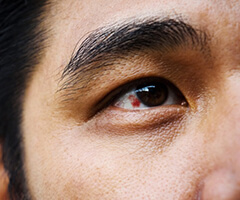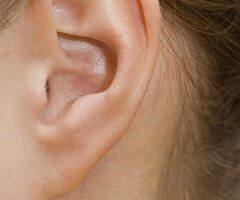[vc_carousel_father arrow=”true” dot=”false” effect=”” arrowclr=”#00a8eb” arrowsize=”20px”][vc_carousel_son img_radius=”14px” align=”left” titlesize=”24px” fontweight=”600″ line_height=”1.5″ image_id=”204″ title=”Anthropometry” titleclr=”#25292b”]
Anthropometry, literally translated as “measurement of the human body”, was born as an independent science in the mid-1800s and is still used regularly in current health and medical practice. Commonly known anthropometric measurements include waist, hip, height and weight, leading to calculations of body composition such as BMI. These measurements and calculations assess the phenotype to determine risk of particular diseases and the function of certain metabolic processes. Furthermore, there are a large number of anthropometric markers that assess internal function of the body with validity, yet are not commonly used in routine practice. These include, among others, the measurements of the wrist, neck, hand length, ankle and foot. The size and shape of specific parts of the body give insight into development, genetics and current function.
With today’s advancement in biometric testing (bloods, saliva, genetics etc) we are able to observe strong correlations between anthropometric measurements and:
– predisposition of disease risk
– hormonal balance/dominance, and;
– genetic traits.
When these anthropometric measures and the ratios between them are analysed as a whole, we are able to understand the body in terms of systems biology (the science that studies how all the systems are linked). This information tells us about the stability of your body and the dynamic elements of your health.
Seaver, J.W., History of anthropometry, in Anthropometry and physical examination: A book for practical use in connection with gymnastic work and physical education. 1909. p. 7-16.
Emdin CA, Khera AV, Natarajan P et al. Genetic Association of Waist-to-Hip Ratio With Cardiometabolic Traits, Type 2 Diabetes, and Coronary Heart Disease. JAMA. 2017 Feb 14;317(6):626-634. doi: 10.1001/jama.2016.21042.
Chae HW, Park YS, Kim DS et al. Final height and insulin-like growth factor-1 in children with medulloblastoma treated with growth hormone. Childs Nerv Syst. 2013 Oct;29(10):1859-63. doi: 10.1007/s00381-013-2124-6. Epub 2013 Jun 18.
Demetrius Albanes & Philip R. Taylor (2009) International differences in body height and weight and their relationship to cancer incidence, Nutrition and Cancer, 14:1, 69-77, DOI: 10.1080/01635589009514078 Hingorjo, M. R., Imran, E., Zehra, S., Qureshi, M. A. Neck circumference: A supplemental tool for the diagnosis of metabolic syndrome J Pak Med Assoc 2016;66(10):1221-6.
Hu, 2014- Neck circumference and fatty liver Learn More
[/vc_carousel_son][vc_carousel_son img_radius=”14px” align=”left” titlesize=”24px” fontweight=”600″ line_height=”1.5″ image_id=”205″ title=”Endocrinology” titleclr=”#25292b”]
Endocrinology is the study of the physiology and pathology of endocrine glands. Endocrine glands produce hormones that sustain metabolism, control sexual secondary characteristics, regulate temperature, influence behavior, personality, and mood, and have many other physiological functions. Of all organs in the body, the endocrine glands are among the most important in influencing body shape, tissue quality, mood and behaviour.
It is important to note that there is a natural variation between individuals when it comes to basal or active levels of different hormones. This variance makes a significant difference to many aspects of human development and function and is commonly observed between the sexes and with ageing but it also a common occurrence in people of the same age and gender. Certain hormones will promote greater height, others are associated with the predisposition for angry or nurturing personalities, while others will dramatically change the ability to absorb and utilise nutrients or to dictate the response to exercise.
Understanding hormone balance and dominance is essential to understand the pathophysiology of a condition and your current state of health and, in addition, how that may alter the management of that condition compared to another individual with the same diagnosis but differing hormone levels.
Moon, J.Y., Kwon, W., Suh, S., Cheong, J.C.et.al (2014) Reference ranges for urinary levels of testosterone and epitestosterone, which may reveal gonadal function, in a Korean male population. The Journal of Steroid Biochemistry and Molecular Biology. Volume 140; p 100-105 Couwenbergs, C, Knussmann, R, Christiansen, K. (1986) Comparisons of the intra-and inter-individual variability in sex hormone levels of men. Annals of Human Biology. Vol 13; issue 1. p 63-72
[/vc_carousel_son][vc_carousel_son img_radius=”14px” align=”left” titlesize=”24px” fontweight=”600″ line_height=”1.5″ image_id=”206″ title=”Embryology” titleclr=”#25292b”]
Embryology refers to the developmental biology that takes place throughout the full life spectrum – from “pre-womb to tomb”. It offers specific insight into the physiological development of the human body, and the links between various organs, systems and functions. Though there are many epigenetic factors that influence human development, by understanding your specific physiology, we can better understand the extent to which your phenotype can be influenced and which epigenetic factors may be most impactful. It is currently known that the environment around the embryo in utero is highly influential of growth and development outcomes that last into adult body function and behaviour.
MacCord, K. (2017) Germ Layers. Retrieved from: Learn More
Entringer S., de Punder K., Verner G., Wadhwa P.D. (2017) Fetal Programming of Telomere Biology: Role of Maternal Nutrition, Obstetric Risk Factors, and Suboptimal Birth Outcomes. In: Rajendram R., Preedy V., Patel V. (eds) Diet, Nutrition, and Fetal Programming. Nutrition and Health. Humana Press, Cham
Bea R.H. Van den Bergh, Marion I. van den Heuvel. Prenatal developmental origins of behavior and mental health: The influence of maternal stress in pregnancy. Neuroscience & Biobehavioral Reviews, 2017
Polanska, K., Krol, A., Merecz-Kot, D. 2017. Maternal stress during pregnancy and neurodevelopmental outcomes of children during the first 2 years of life. Learn More
[/vc_carousel_son][vc_carousel_son img_radius=”14px” align=”left” titlesize=”24px” fontweight=”600″ line_height=”1.5″ image_id=”206″ title=”Ancestry & Genetic Lineage” titleclr=”#25292b”]
Genetic lineage is a significant determinant of the ideal environment and lifestyle, and subsequent defense systems, for your health. For example, an individual with a genetic history from England who is currently living in Australia will be more prone to sunburn and diseases common to a hot environment. As we learn more about dominant and recessive genes, morphisms and evolution of genetic material over time, and predispositions that exist according to genotype and environment, we further grasp the notion that your genetic code is simply a blueprint but does not in and of itself determine your future.
Cust AE, Goumas C, Vuong K, et al. MC1R genotype as a predictor of early-onset melanoma, compared with self-reported and physician-measured traditional risk factors: an Australian case-control-family study. BMC Cancer. 2013;13:406. doi:10.1186/1471-2407-13-406.
Diepgen, T. and Mahler, V. (2002), The epidemiology of skin cancer. British Journal of Dermatology, 146: 1-6. doi:10.1046/j.1365-2133.146.s61.2.x
[/vc_carousel_son][vc_carousel_son img_radius=”14px” align=”left” titlesize=”24px” fontweight=”600″ line_height=”1.5″ image_id=”207″ title=”Neuropsychology” titleclr=”#25292b”]
Neuropsychology is the study of how the brain influences your cognitive functions and behaviors. The connection between the brain and behavior was well documented by Hippocrates, the father of modern medicine, who viewed the brain as the compass or the main directional system for the body.
Today we have the ability to measure the activity of specific areas of the brain and relate this activity to various cognitive functions and behaviors. Some of this is determined by the dominant hormones, the differing predominance in use of the functional areas of the brain as measured by EEG, and neurotransmitters in the brain’s chemistry. Risk taking behaviour, optimism and pessimism are all able to be predicted from the increased EEG activity in certain areas of the brain. In addition, when cognitive activity is measured by fMRI, correlations between the brain activity associated with vegetarian eating and a more nurturing affect can be seen. These and the many other findings looking at functional brain assessments allow us to understand personality traits, and how personality state can change for different people.
Hecht D. The Neural Basis of Optimism and Pessimism. Experimental Neurobiology. 2013;22(3):173-199. doi:10.5607/en.2013.22.3.173.
Black CL, Goldstein KE, LaBelle DR, et al. Behavioral Approach System Sensitivity and Risk Taking Interact to Predict Left-Frontal EEG Asymmetry. Behavior therapy. 2014;45(5):640-650. doi:10.1016/j.beth.2014.01.006.
Studer B, Pedroni A, Rieskamp J. Predicting Risk-Taking Behavior from Prefrontal Resting-State Activity and Personality. Siegel A, ed. PLoS ONE. 2013;8(10):e76861. doi:10.1371/journal.pone.0076861.
Filippi M, Riccitelli G, Falini A, Di Salle F, Vuilleumier P, Comi G, et al. (2010) The Brain Functional Networks Associated to Human and Animal Suffering Differ among Omnivores, Vegetarians and Vegans. PLoS ONE 5(5): e10847. Learn More
[/vc_carousel_son][vc_carousel_son img_radius=”14px” align=”left” titlesize=”24px” fontweight=”600″ line_height=”1.5″ image_id=”209″ title=”Phenotypology” titleclr=”#25292b”]
Phenotypology is the study of the exterior display of your genetic expression. Your genes, when influenced by epigenetic factors, express and create your body as it is today. Your body on the outside is a direct reflection of the way your genes are expressed. This is what we call your phenotype: the physical representation of your gene expression.
At any given point in time your lifestyle, environment, food and activity all influence your phenotype and give a clear indication of how your genes are expressed. An individual’s physical traits and characteristics offer deep insight into the health or dysfunction of the body. Body shape, height, and weight, waist and hip can be reliable indicators of certain metabolic tendencies and propensity for developing various illnesses; signs in your body, such as cracked lips, can be related to vitamin B1 deficiency; the length of your index ring finger is related to sex hormone dominance. Understanding the associated deficiencies or dysfunctions for these physical signs provides valuable information in evaluating your current state of health.
Sheetal A, Hiremath VK, Patil AG, Sajjansetty S, Kumar SR. Malnutrition and its Oral Outcome – A Review. Journal of Clinical and Diagnostic Research : JCDR. 2013;7(1):178-180. doi:10.7860/JCDR/2012/5104.2702.
John, M., Kilduff, L, Cook C, et al (2014) Digit Ratio (2D:4D): A Biomarker for Prenatal Sex Steroids and Adult Sex Steroids in Challenge Situations. Frontiers in Endocrinology. Vol 5 – Learn More
[/vc_carousel_son][vc_carousel_son img_radius=”14px” align=”left” titlesize=”24px” fontweight=”600″ line_height=”1.5″ image_id=”210″ title=”Semeiotics” titleclr=”#25292b”]
Semeiotics studies signs and symptoms of the human body to correctly identify, collate and interpret, through diagnostics, the origin of simple or complex diseases. It can also identify the patterns of individual normality of heart rate, cholesterol, and perspiration for example, and therefore recognize patterns that may be pathologic for that individual. For example, low heart rate could indicate bradycardia in one patient and normal heart function in another. Semeiotics can offer great insight into deficiencies or dysfunctions in many systems of the body and corresponding levels of vitamins, minerals and biochemical balance or imbalance.
Learn More
[/vc_carousel_son][vc_carousel_son img_radius=”14px” align=”left” titlesize=”24px” fontweight=”600″ line_height=”1.5″ image_id=”211″ title=”Exposomics” titleclr=”#25292b”]
Emerging sciences such as nutrigenomics, and exposomics are delving deeply in the subject of how the environment and the partial introduction of it in our body in the form of food, air, water can influence cells to activate definite functions. It is obvious that certain diet types trigger inflammation genes, and others switch them on. Investigation on which molecules trigger deeper processes such as regeneration, growth, apoptosis are also investigated. The process of glycation is another interesting topic that requires direct reference especially when revisiting our modern diet types rich in glucose derivatives and poor in fibers.
[/vc_carousel_son][vc_carousel_son img_radius=”14px” align=”left” titlesize=”24px” fontweight=”600″ line_height=”1.5″ image_id=”212″ title=”Geomedicine” titleclr=”#25292b”]
Any organism requires a specific environment to survive and to thrive. Geomedicine focuses on the influence of geographic location and environment on individual health and wellness. This is evident in how the environment affects the skin color of a population over many generations. In this case, the sun, or lack thereof, acts as a master control for genes, producing more dark skin pigment when living at locations with more sun exposure and less skin pigment when living at locations with less sun exposure. Your location in the world, the seasons and even the local temperature all play a very important role in health.
Nina G. Jablonski, George Chaplin. Human skin pigmentation as an adaptation to UV radiation. Proceedings of the National Academy of Sciences May 2010, 107 (Supplement 2) 8962-8968; DOI: 10.1073/pnas.0914628107
Larry A. Sonna, Jun Fujita, Stephen L. Gaffin, and Craig M. Lilly. Invited Review: Effects of heat and cold stress on mammalian gene expression. Journal of Applied Physiology 2002 92:4, 1725-1742
Stewart, Simon, et al. “Heart failure in a cold climate: seasonal variation in heart failure-related morbidity and mortality.” Journal of the American College of Cardiology 39.5 (2002): 760-766.
[/vc_carousel_son][vc_carousel_son img_radius=”14px” align=”left” titlesize=”24px” fontweight=”600″ line_height=”1.5″ image_id=”213″ title=”Molecular Biology” titleclr=”#25292b”]
Molecular biology is the study of the molecular underpinnings of replication, transcription, translation and cell function. It is a branch of science that investigates biological activity at the molecular level, particularly the interactions between various systems of a cell and the structure, function and regulation of proteins and nucleic acids essential to life. It overlaps with biochemistry and genetics with particular focus on DNA, RNA and protein biosynthesis.
In more recent years, there has been a strong shift in interest from DNA to RNA, whose functions range from serving as a temporary working copy of DNA to actual structural and enzymatic functions, as well as it being a functional and structural part of the translation apparatus – the coding, decoding, regulating and expression of genes. Epigenetic changes represent an active field of study within molecular biology.
[/vc_carousel_son][vc_carousel_son img_radius=”14px” align=”left” titlesize=”24px” fontweight=”600″ line_height=”1.5″ image_id=”214″ title=”Traditional Chinese Medicine” titleclr=”#25292b”]
Traditional Chinese Medicine (TCM) refers to a broad range of medical practices developed in China over a span of more than 2000 years and include herbal medicine, acupuncture, tui-na, qi-gong and dietary therapy. TCM is an ancient way of conceptualizing and applying medical concepts in a way which maintains their association to life and its manifestation. More than any other system, TCM is devoted to quantifying not only the environment and its features but also how the body responds to the environment. TCM focuses on harmony between being and environment, including the seed of a plant and its soil, the rain, water quality, drainage quality, nourishment contained in the mineral content of the soil, passages of air in the soil, amount of available air, etc. In Chinese medicine, elements of the body and environment are considered to be united and hence always influencing one another. Similar to Ayurveda, ancient practices used in TCM have been confirmed using modern research and assessment methods
Dai, Jianye, et al. “ZHENG-omics application in ZHENG classification and treatment: Chinese personalized medicine.” Evidence-Based Complementary and Alternative Medicine 2013 (2013).
Wang, Peng, and Zhen Chen. “Traditional Chinese medicine ZHENG and Omics convergence: A systems approach to post-genomics medicine in a global world.” Omics: a journal of integrative biology 17.9 (2013): 451-459.
[/vc_carousel_son][vc_carousel_son img_radius=”14px” align=”left” titlesize=”24px” fontweight=”600″ line_height=”1.5″ image_id=”215″ title=”Chronobiology” titleclr=”#25292b”]
“Chrono” refers to time and “biology” refers to the study of life. Chronobiology thus denotes a lifestyle according to specific changes in time, like the day/night cycle, which are innate to your body. Human beings have 2 types of internal clocks that set the preferred pace for our biological rhythms. These clocks subconsciously tell you when to eat, sleep, regulate temperature, produce hormones, and even move your body.
The first internal timekeeper, known ast the Central clock, is related to the light/dark cycle. Through the activity in your suprachiasmatic nucleus found in your hypothalamus, your body aligns with the earth’s rotation around the sun to stay on a regular 24-hour cycle.
The second timekeeper, the Peripheral Clocks, are found in each of the tissues within your body, e.g. digestive organs, pancreas, muscles, adrenals, kidneys, etc. Ideally, these timekeepers prefer your tissues to operate in a certain way at a certain time. For example, your digestive organs may work best resting at a certain time of day or night. When your lifestyle does not allow your tissues to function as they prefer, you Peripheral Clocks try to adapt, however this adaptation can be a stressor to the optimal function of your tissues, organs and systems, creating a phenomenon called dyssynchrony.
Chronobiological dyssynchrony, commonly researched with shift workers, has been related to significantly higher levels of metabolic syndrome, cancer, heart disease and premature death.
Research shows that the Central and Peripheral Clocks within individuals differ so it is important for each individual to understand the time that is best for them to eat, sleep and move in order to find the greatest synchrony with their system.
Atkinson, G., et al., Chronobiological Considerations for Exercise and Heart Disease. Sports Medicine, 2006. 36(6): p. 487-500. Bird, S.P. and K.M. Tarpenning, Influence of Circadian Time Structure on Acute Hormonal Responses to a Single Bout of Heavy-Resistance Exercise in Weight-Trained Men. Chronobiology International, 2004, Vol.21(1), p.131-146, 2004. 21(1): p. 131-146.
Bonsch, D., et al., Daily variations of homocysteine concentration may influence methylation of DNA in normal healthy individuals. Chronobiol. Int., 2007. 24(2): p. 315-326.
Garaulet, Marta; Madrid, Juan A (2009) Chronobiology, genetics and metabolic syndrome. Current Opinion in Lipidology: Volume 20 – Issue 2 – p 127–134. doi: 10.1097/MOL.0b013e3283292399
Canuto, Raquel et al. (2013) Metabolic syndrome and shift work: A systematic review. Sleep Medicine Reviews , Volume 17 , Issue 6 , 425 – 431
[/vc_carousel_son][vc_carousel_son img_radius=”14px” align=”left” titlesize=”24px” fontweight=”600″ line_height=”1.5″ image_id=”216″ title=”Ayurveda” titleclr=”#25292b”]
Ayurveda, or Ayurvedic Medicine, is a Sanskrit word for life-knowledge. Literally defined, it is the compilation of the word “ayur” meaning “life” and “veda”, meaning “to know through experience”. In Ayurveda, the most important factor in determining pathology is how healthy and able a person is of defending themselves from any internal or external pathogens. Over thousands of years and countless experiments, Ayurveda grew to decide that most of the weaknesses in the body are caused by toxicity. Thus, the parameter used to determine the health of the body is how pure or clean the system is. The study of toxicity and how to make the body pure was one of the key components of Ayurveda – referring not only to the body, but to both body and mind. The belief in Ayurveda was that achieving a pure mind was very important to achieving a state of internal and external coherence. In recent times, elements of Ayurveda have been validated in a modern setting, while the study of what is called Ayurgenomics is now confirming these ancient principles
Sethi, Tav Pritesh, Bhavana Prasher, and Mitali Mukerji. “Ayurgenomics: a new way of threading molecular variability for stratified medicine.” (2011): 875-880.
Juyal, Ramesh C., et al. “Potential of ayurgenomics approach in complex trait research: Leads from a pilot study on rheumatoid arthritis.” PloS one 7.9 (2012): e45752.
Mukerji, Mitali, and Bhavana Prasher. “Ayurgenomics: A new approach in personalized and preventive medicine.” Sci Cult77 (2011): 10-7.
[/vc_carousel_son][vc_carousel_son img_radius=”14px” align=”left” titlesize=”24px” fontweight=”600″ line_height=”1.5″ image_id=”212″ title=”Epigenetics” titleclr=”#25292b”]
Epigenetics is the science of how genes are expressed and changed over time, whether throughout a lifetime or passed on through generations. Each human cell contains DNA and is therefore like an encyclopedia full of information. However, not all information is activated at once. Some codes lie dormant until it’s time for them to activate, like the changes we may see during the natural aging process. Others may lie dormant until something specific activates them, as is the case with certain genetic conditions. Others may lie dormant forever because they were never triggered at all. Thanks to this emerging science, we are coming to an increasing understanding of how genes work, and that they can be activated or deactivated based on epigenetic changes due to lifestyle and environmental triggers like diet, exercise, pollution, sleep, stress and more.
[/vc_carousel_son][vc_carousel_son img_radius=”14px” align=”left” titlesize=”24px” fontweight=”600″ line_height=”1.5″ image_id=”214″ title=”Lifestyle Medicine” titleclr=”#25292b”]
Lifestyle Medicine studies the best methods to create the optimal environment for the body to live and thrive. Its aim is to return the body to homeostasis by altering the lifestyle and environmental factors that influence gene expression. Nutrigenomics and exposomics are two of a number of sciences that form Lifestyle Medicine. Nutrigenomics concerns how nutrients affect the expression of our genes. We know that certain diets can trigger genes of inflammation, while others can reduce inflammation, optimize methylation and glycation, and improve overall bodily function. The emerging science of exposomics is delving deeply into the subject of how the environment and the partial introduction of it into our body in the form of food, air, and water can influence cells and biological pathways to health or disease. An individual’s exposure is considered to begin before birth and includes variable exposures from the physical environment and workplace over their lifetime. The fact that only about 1-5% of disease is accounted for by genetics and the rest by lifestyle and environment, coupled with evidence that in utero and early childhood lifestyle and environmental exposures influence risk for disease later in life substantiate Lifestyle Medicine as a significant field in present and future medicine.
[/vc_carousel_son][/vc_carousel_father]
GPS tracks where you are in the world to update your weather, climate, pollution & pollen counts and give accurate health advice.
Notifications in language that resonates with your natural way of being equals easy understanding and better compliance.
Shae syncs with your natural body clock, supporting you through 24 hours of the day.
Chat with your coach, find new friends and connect with people who literally think the same way that you do.
Data from your body is used to tailor every aspect of your recommendations. No other app is as precise for your health.
Soon you will be able to connect with wearables and sync your data for real-time practical health choices.





















